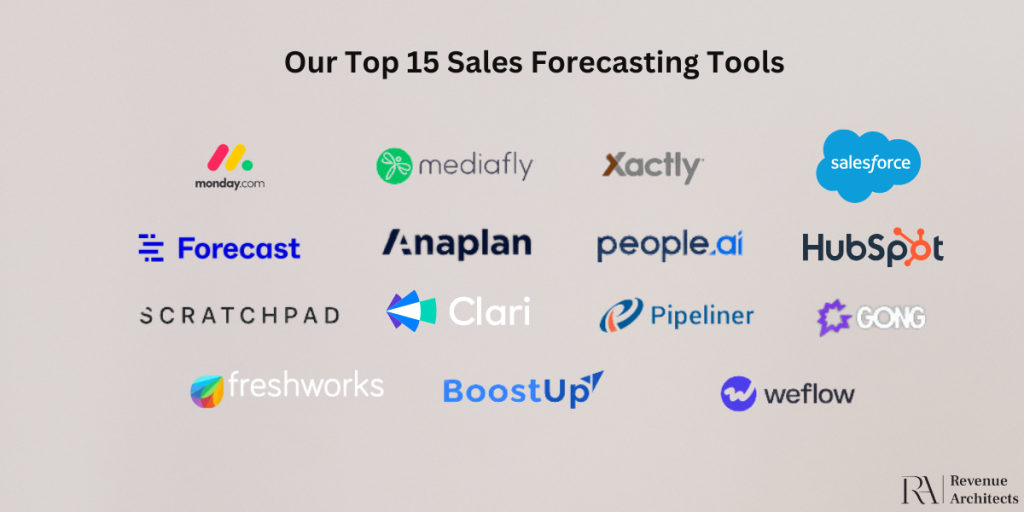Sales forecasting isn’t just about looking into the future—it’s about understanding the present to make informed, strategic decisions. John Naisbitt once said, “The most reliable way to forecast the future is to try and understand the present.” I couldn’t agree more. Over the years, I’ve worked with over 300 companies to refine their sales processes, integrating strategic planning with the right tools to help them grow.
As the Founder and Managing Partner of Revenue Architects, and having served as a sales leader across multiple companies, I have witnessed the transformative power of the right sales forecasting tool. These tools provide a clear picture of your current standing, what’s working, and where adjustments are needed, empowering you to make informed decisions. Below are the top 15 tools I recommend based on their ability to help you achieve accurate, actionable forecasts.
-
What is Sales Forecasting?
Before exploring the tools, let’s examine sales forecasting. It estimates future sales by analyzing historical data, current market conditions, and sales pipeline activities. An accurate sales forecast is critical for resource planning, setting realistic goals, and aligning your team’s efforts.
There are several types of sales forecasting:
- Historical Forecasting – Predicting future sales based on past performance.
- Pipeline Forecasting – Focusing on deals currently in your sales pipeline.
- Opportunity Stage Forecasting – Estimating the probability of closing deals based on their stage.
- Regression Analysis – Using statistical methods to forecast sales based on multiple variables.
- Intuitive Forecasting – Relying on your sales team’s expertise and gut feeling.
Now, let me introduce you to the top recommendations for sales forecasting tools, each chosen for its practicality and efficiency in helping you manage your sales operations, in no particular order:
Gong takes a different approach by focusing on sales conversations. It’s brilliant if you want to understand how real interactions influence the likelihood of closing a deal.
I’m always intrigued by Gong.io’s unique take on sales forecasting. Instead of just looking at the numbers, Gong analyzes sales conversations to give insights into deal progress. It’s a fantastic tool if you want a deeper understanding of what’s happening in your sales process. For more tips on boosting your team’s performance, check out this expert guide on SDR ramp-up.
Key Features:
- AI-powered conversation analysis
- Deal progression insights
- CRM integration
For companies looking for simplicity without sacrificing functionality, Freshsales is a fantastic option. It’s intuitive and doesn’t overwhelm you with unnecessary features.
If you’re a small or mid-sized company, Freshsales is an excellent choice. I like its clean interface and ease of use, which makes forecasting straightforward without overcomplicating things. It’s also budget-friendly, which is always a plus for growing businesses.
Key Features:
- AI-powered deal insights
- Custom forecasting reports
- Automated lead scoring
Scratchpad is a lifesaver for sales teams that need speed. It’s simple and effective—sales reps don’t have time to waste jumping between systems, and Scratchpad ensures they don’t have to.
I’m a big fan of Scratchpad because it integrates smoothly with Pipedrive, making pipeline management and updates a breeze. If your sales team needs quick access to their data without the clutter, this tool is for you. It’s efficient and straightforward and helps keep everything organized without the hassle.
Key Features:
- Fast data entry interface
- Customizable dashboards
- Syncs directly with Pipedrive CRM
WeFlow is built specifically for Salesforce users, so if that’s your CRM of choice, this tool will make your life a lot easier regarding forecasting.
If your company relies on Salesforce, WeFlow is a no-brainer. I recommend it for teams that need fast, efficient forecasting within the Salesforce platform. It’s easy to use and cuts down on time spent toggling between different tools.
Key Features:
- Native Salesforce integration
- Real-time forecast updates
- Collaborative forecasting features
People.ai automates a lot of the tedious work involved in sales forecasting, making it easier for teams to focus on what matters: closing deals.
People.ai takes the manual work out of forecasting, so I recommend it often. It automatically captures and analyzes sales activity, saving time and giving accurate forecasts without the guesswork. It’s perfect for busy teams focusing on results, not data entry.
Key Features:
- Automated sales activity tracking
- AI-powered forecasting models
- CRM integration
Pipeliner stands out for its visual approach to sales forecasting. It’s straightforward to understand, which makes it perfect for sales teams that prefer a more visual representation of their pipeline.
One of the things I love most about Pipeliner is its visual interface. If you’re a more visually driven team, Pipeliner makes it easy to track your pipeline and forecast sales without digging through data pages. It’s simple, effective, and very user-friendly.
Key Features:
- Visual pipeline management
- Customizable sales forecasts
- CRM integration
If you’re serious about leveraging AI for your forecasts, BoostUp.ai delivers. It ties together activity tracking, pipeline management, and real-time insights to give you accurate, actionable forecasts.
BoostUp.ai is one of my top picks for companies that need a comprehensive AI-driven forecasting tool. It gives you a clear picture of your sales pipeline while helping improve forecast accuracy. It works wonders for teams looking to optimize their forecasting processes.
Key Features:
- AI-driven analytics
- Pipeline and deal tracking
- Comprehensive forecasting insights
Xactly’s forecasting goes beyond just sales. It integrates compensation data and other business metrics, giving you a holistic view of your revenue operations.
I’ve worked with Xactly in companies where compensation data was critical to forecasting. Xactly helps tie together performance and compensation metrics, giving a complete picture of revenue operations. It’s excellent for organizations that need detailed, performance-based insights.
Key Features:
- Predictive analytics
- Compensation management integration
- Scenario-based forecasting

Salesforce has been a staple in the CRM world for years, and its sales forecasting capabilities are second to none. If you’re already using Salesforce, this is a must-have.
Salesforce is a beast in sales forecasting, especially for larger enterprises. I always suggest Salesforce Sales Cloud to companies already embedded in the Salesforce ecosystem. It’s incredibly customizable so that you can tailor it to your business needs.
Key Features:
- AI-powered forecasting
- Customizable dashboards
- Comprehensive CRM functionality
10. Monday Sales CRM
I’ve always appreciated tools that give you flexibility without overcomplicating things, and Monday Sales CRM does just that. If you’re like me and prefer full control over your sales processes, you’ll love how customizable this platform is. You can set up workflows exactly the way you want, track your pipeline visually, and stay on top of sales goals without getting lost in the details.What I like most is how intuitive it is, even for teams that aren’t super tech-savvy. It’s adaptable for any size business and integrates well with other tools you’re probably already using. If you’re looking for a visual, flexible CRM, Monday is definitely worth a look.
Key Features:
- Customizable sales workflows
- Visual pipeline management
- Seamless integration with popular tools
For companies dealing with complex data sets, Anaplan is a game-changer. It’s not just about forecasting; it’s about planning for every possible scenario.
Anaplan is my go-to recommendation for businesses that need to dive deep into data and scenario planning. It’s built for companies that need to plan for various outcomes, making it a powerful tool for those handling large, multi-dimensional datasets.
Key Features:
- Real-time scenario analysis
- Collaborative forecasting
- Multi-dimensional data modeling
Clari is the go-to for AI-driven sales forecasting. It’s one of the most powerful tools for revenue operations because it doesn’t just give you numbers—it gives you insights.
Clari’s AI-driven insights are second to none, and I recommend them for teams that need more than surface-level forecasts. Clari helps you understand your pipeline in-depth, providing invaluable insights for making strategic decisions.
Key Features:
- AI-driven revenue forecasting
- Sales pipeline analysis
- Automated alerts and insights
This tool gives you a full view of your sales performance beyond just the numbers. It’s perfect for companies that want to improve overall engagement across sales, marketing, and customer success. Unfortunately, when I type Mediafly in my Google search, it shows an add for Zoho, which I don’t like. But that is not the topic. I will tell you why I love Mediafly.
It offers more than forecasting—it ties together sales, marketing, and customer engagement. I recommend it for companies looking to streamline their sales processes and improve overall performance visibility. It’s a comprehensive tool that helps connect the dots between various departments.
Key Features:
- Multi-channel sales analytics
- Real-time forecasting
- Easy integration with tech stacks
HubSpot nails it when it comes to ease of use. It’s intuitive, and the data insights are spot on. Whether you’re a startup or an established business, HubSpot has you covered.
HubSpot is all about simplicity and effectiveness, which is why I like it. It offers a clean, user-friendly interface, and the forecasting capabilities suit teams that want to visualize their pipelines and make data-driven decisions.
Key Features:
- Pipeline and deal tracking
- Custom reporting and dashboards
- Integration with marketing and service tools
If you want real-time insights and a tool that syncs effortlessly with your CRM, Forecast.io is worth a look. It gives you a clear picture of your pipeline health at any moment.
Forecast.io is an excellent choice if you’re looking for real-time updates and seamless CRM integration. I often recommend it to businesses that need up-to-the-minute pipeline insights, and it works well with most CRM systems, which is always a bonus.
Key Features:
- Real-time pipeline visibility
- Integration with popular CRMs
- Predictive models

What should you look for in sales forecasting tools?
As you can see above, choosing the right sales forecasting tool comes down to what your business needs. Here’s what I recommend looking for:
- Ease of Use: If your team finds it difficult to use, they won’t. It’s as simple as that. Choose an intuitive tool.
- Integration: Make sure it integrates nicely with your existing systems, such as your CRM, ERP, or other tools.
- Forecasting Methods: You want a tool that fits the way you forecast. Pick what works best for you, whether it’s regression analysis, opportunity stage forecasting, or AI-powered predictions.
- Collaboration: Forecasting is a team effort. Get a tool that makes it easy to share insights and forecasts with your team.
- Real-Time Updates: Your sales data is constantly changing, so your forecast needs to stay current. Look for tools that offer real-time data syncing.
My suggestion is to always assess what you really need and what your team members love and stick to it. Switching between different tools and using tools that your team dislikes can slow down your sales team. If you find it difficult to make a decision on your own and need some help, feel free to reach out.

